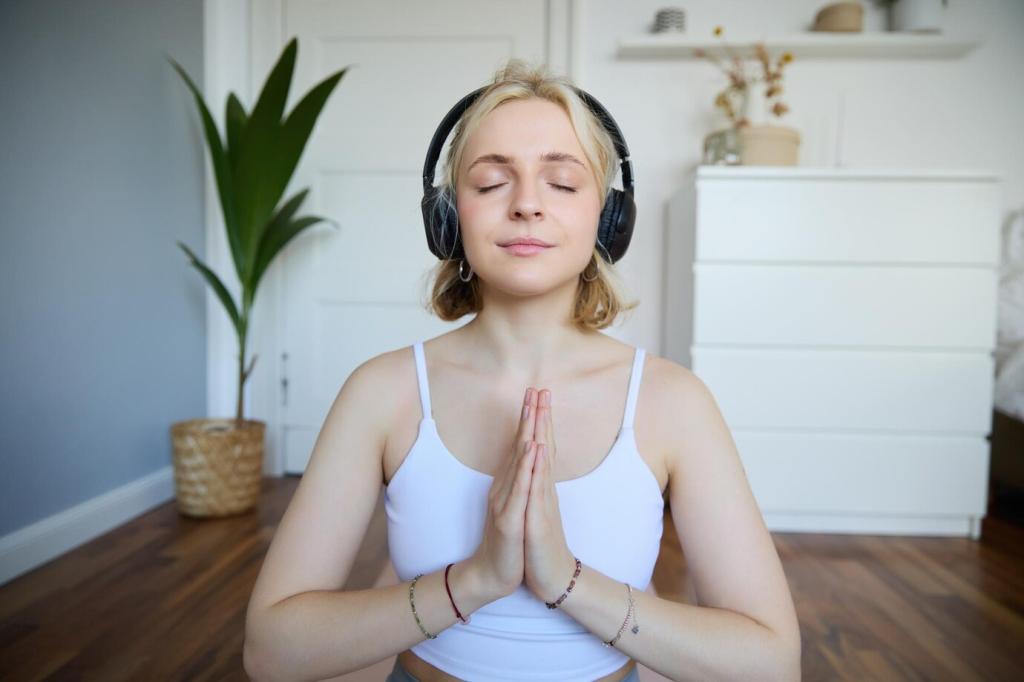Deepening the Mind-Body Conversation
Move attention from crown to toes, greeting sensations without fixing them. Guidance helps pace the journey, naming neutrality as valuable data. Over time, you’ll detect early whispers of tension and respond before discomfort becomes shouting.
Deepening the Mind-Body Conversation
Guided loving-kindness invites phrases like “May I be safe,” while you breathe into tight spaces. This gentle language changes your inner posture, easing protective bracing. Kindness becomes somatic, not just conceptual, and the body often follows with relief.





